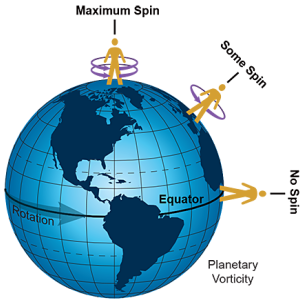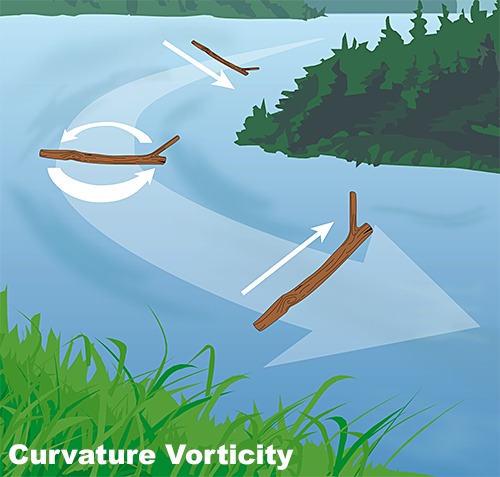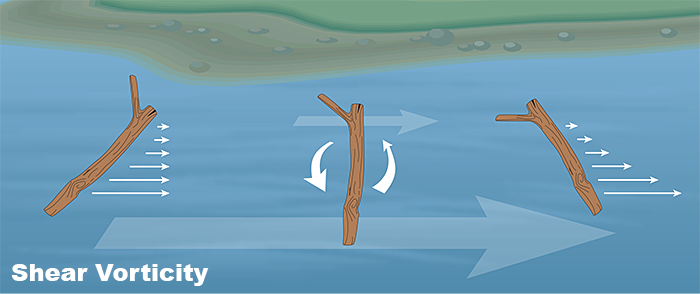There are two main components to absolute vorticity: planetary vorticity and relative vorticity.

Planetary Vorticity
Planetary vorticity is the spin of an object based upon the rotation of the planet. Except for someone located along the equator, the Earth's rotation imputes planetary vorticity to everyone and everything.
At the poles, this vorticity is at its maximum, and it decreases as one moves toward the equator. This rotation is cyclonic - counter clockwise in the Northern Hemisphere and clockwise in the Southern Hemisphere.
As a result, a parcel of air that is moving toward a pole will undergo an increase in planetary vorticity (spin faster), while air moving toward the equator will see a decrease in planetary vorticity (spin slower).
Going back to the tilt of the trough, the faster a parcel moves north, the faster the vorticity increases. This helps explain why negatively tilted trough are more likely to cause the development of severe weather as compared to positively tiled troughs, where the increase in planetary vorticity is slower.

Relative Vorticity
Relative vorticity is the rotation of an object based upon its location in an air current. It consists to two components: curvature of the airflow and the difference in the speed of the wind from one side of the parcel to the other. One way to picture this is a stick floating in a river.
Curvature vorticity
As the flow of water changes direction at bends in the river, the orientation of the stick will also change. If the stick lies perpendicular to the bank, it will rotate to maintain this orientation as the river bends.
Therefore, the direction the stick rotates (clockwise/counter clockwise) depends upon the direction of the bend in the river. This is curvature vorticity.
For the Northern Hemisphere atmosphere, parcels of air will have cyclonic (counter clockwise) spin in troughs and anti-cyclonic (clockwise) spin in ridges.
Shear vorticity
The rate at which the water flows down the center of the river is faster than near the shore. Therefore, the end of the stick that is nearest to the middle of the river will move faster than the end nearest to shore. This leads to the stick rotating and is called shear vorticity.
The direction of rotation is dependent upon which side of the river the stick is located. Looking downstream, if the stick is to the left of centerline, then the rotation will be counter clockwise. If the stick is located to the right side of the river's center then the rotation will be clockwise.

For the Northern Hemisphere atmosphere, the same holds true. A parcel located on the north side of the jet stream will experience increased counter clockwise flow and therefore have increased vorticity. If that same parcel was located south of the jet stream, then the spin would be clockwise for a decrease in vorticity.
Summing it all up
Cyclonic spin (counter clockwise) in the North Hemisphere is termed "positive". Anti-cyclonic spin (clockwise) is termed "negative". Planetary vorticity is always positive. However, the two relative vorticity components can be either positive or negative.
Therefore, absolute vorticity is the sum total of planetary, curvature, and shear vorticities. The vorticity depicted on the 500 mb charts is this absolute vorticity. The largest vorticity values are found in troughs north of the jet stream, with the lowest values in ridges south of the jet stream.


